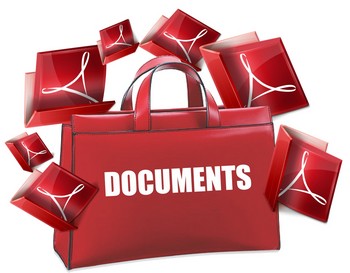Back before computers became commonplace, no one gave much thought to whether or not people would be able to “read” files. All anyone had to do was whip out a typewriter, peck a few keys, and hand the finished copy over to the phone. But as electronic communication became more and more common, users started experiencing file mismatch issues.
File mismatch is when different individuals or organizations use different computer operating systems. As a result, certain electronic files that depend on certain encryption to be opened or read may appear to be gibberish (or even not appear at all) when viewed on a computer without the necessary programs. —and in a world where many computer companies compete for dominance, this can lead to some serious problems.
Fortunately, there’s an incompatibility fix that everyone, from PC enthusiasts to Apple fanatics, can use with ease: PDFs.
PDFs around compatibility problem by allowing users to—in effect—take snapshots of their documents and send them together as image files. Recipients simply need to download a free program to be able to open and view the files, regardless of the format or program the original document uses. However, that’s not all PDFs are for. Here are three other reasons to rely on PDF.
1. They cannot be changed
Once a PDF has been created, it cannot be changed. This is why PDFs are used so frequently in business and legal settings; there is no possibility of the document being changed. This makes it especially suitable for things like contracts, terms and conditions, disclosures, and a number of other documents that are not safe to submit as text files. Immutable PDF protects both sender and recipient. And when a signature is required, certain programs make it possible to add legally binding digital signatures to PDFs.
2. They can include graphics and pictures
Many important documents incorporate visual elements into their designs. Things like graphs, charts, photos, logos, etc. they all work together to create a striking, attention-grabbing document that must get its point across very well. However, sometimes when documents that include these elements are transferred from one computer to another, certain formatting data is lost or mixed up. This can result in images being too large or too small to fit on the page, graphics with incorrect coloring, or any number of other problems that are equally annoying. PDF avoids this by turning the document into a single, flat image, as opposed to a multi-layered file with dozens of different possible problem areas.
3. They are easy to use
Despite its high usability, PDF is still easy to learn and easy to use. If you have the appropriate software, files can be converted directly to PDF format by simply selecting the appropriate option from the print menu. Other word to pdf converter the program exists so that you can make updates or changes to a document before sending it (assuming that the original author has given you permission to do so). For working in PDF, as long as the original starts as some form of text file and not a scanned image, you can still search and copy like any other file type.
So whether you work with documents at school, at work, or even in your personal life, PDFs are a one-of-a-kind way to ensure that your most important files are kept accessible, usable, and safe. Or, you can go back to using the typewriter.








